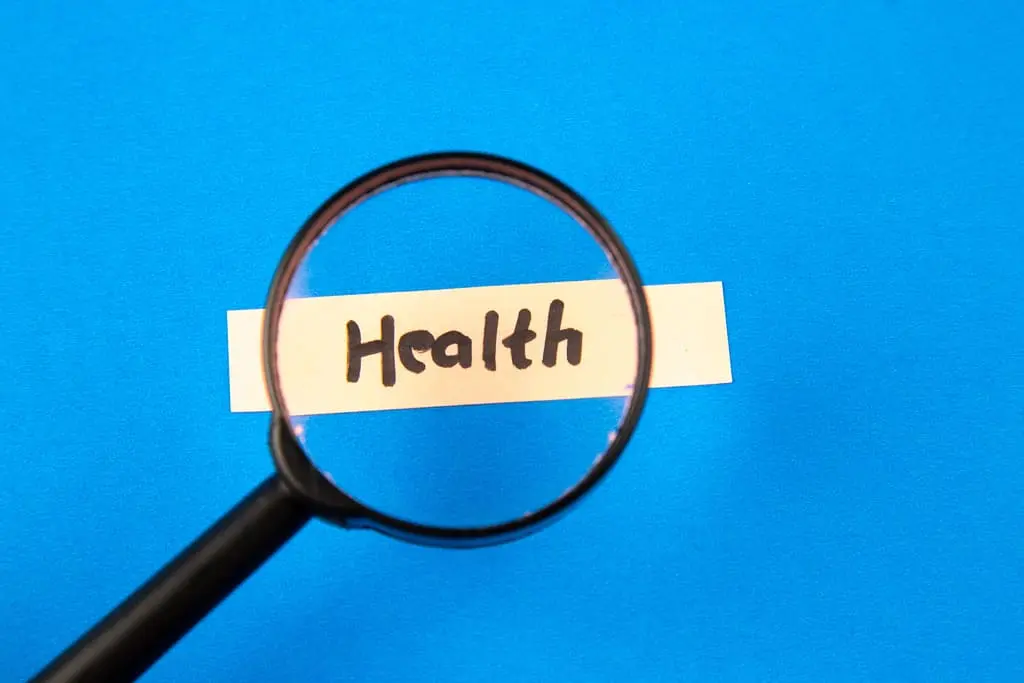What Are NICE Quality Standards?
NICE quality standards are specific, evidence-based statements developed independently to drive and measure health, public health, and social care improvements. These standards are key in ensuring that care is safe, effective, and centred around the care recipient’s experience.
NICE quality standards are designed to be adaptable for use in local settings and are not formally tested. They provide a framework for stakeholders, including health and social care providers, practitioners, commissioners, and care recipients, to demonstrate quality care and evidence-based practices. These standards are used for quality improvement, assurance, monitoring, and influencing commissioning. They aim to help practitioners and commissioners provide the best quality of care for the best value for money. The NICE guidance quality standards are developed to cover specific clinical areas or pathways based on the best available evidence, ensuring that care is safe and effective and considers the care recipient’s experience.
How Can the Quality Standards be Used?
Attending group fitness classes keeps you motivated to exercise. Seeing others energizes you to go on. Also, it helps you make new friends and enhances your social skills. Remember that health also involves a state of social wellbeing.
When it comes to quality improvements in public health and social care, the NICE quality standards can help by:
Identifying areas of improvement in the care quality
Improving education and training
Designing and conducting an audit
Setting goals and demonstrating the level at which services should be provided
Creating an action plan for potential improvements
Creating frameworks for quality assurance involves:
Identifying service gaps
Setting benchmarks
Tracking changes over time
Establishing key performance indicators (KPIs) to monitor performance
Providing evidence of service quality to meet regulatory standards
Quality standards play a role in influencing and shaping commissioning decisions. They help in:
Identifying necessary improvements to services
Supporting business cases and securing funding and resources
Empowering providers to request specific support for enhancing service quality
Offering commissioners key quality markers to incorporate into service specifications
The Role of NICE in the UK Healthcare System
Regulators like the Care Quality Commission (CQC) and Ofsted endorse NICE quality standards to help identify and define good quality care. Although the standards are not mandatory, they support the government’s vision for a health and care system that delivers the best possible health outcomes.
NICE’s responsibilities are broad and enclose several key areas:
1. Guideline Development
NICE produces guidelines in three key areas:
- Clinical practice
- Health promotion and health prevention
- Social care services
These guidelines are built on evidence-based effectiveness, safety, and cost-efficiency evaluations. They assist health professionals in delivering optimal care and addressing the population’s needs.
2. Health Technology Assessment
NICE assesses new health technologies for NHS adoption, focusing on clinical efficacy and value for money. It primarily measures health outcomes using quality-adjusted life years (QALY) to quantify the expected benefits of treatments.
3. Quality Standards and Social Care
Under the Health and Social Care Act 2012, NICE develops evidence-based guidance and quality standards for health and social care. These standards encompass clinical guidelines, technology, safe staffing, medicine handling, antimicrobial prescribing, and diagnostics.
4. Public Health and Health Promotion
NICE is also responsible for advancing public health by promoting wellness and health prevention. This includes creating resources that provide high-quality evidence and best practices.

5. International Collaboration
NICE contributes to the global health landscape by pioneering technology assessments in other healthcare systems through NICE International. This advisory service fosters connections with international governments, helping organisations and agencies worldwide.How NICE Develops Its Quality Standards
The development of NICE quality standards involves several steps:
Developing a Topic Overview: Identifying areas that require quality improvement
Prioritising Areas for Quality Improvement: Focusing on areas aligned with national priorities
Developing Statements and Measures: Creating specific statements and measures to guide quality improvement
Drafting the Quality Standard: Preparing a draft for consultation
Consultation and Feedback: Engaging stakeholders to review and provide feedback
Validation and Consistency Checking: Ensuring the quality standards are consistent and valid
Publication: Making the standards publicly available
Reviewing Published Standards: Regularly updating the standards to align with new guidance
The Importance of NICE Quality Standards
NICE offers a well-developed framework for defining and measuring quality, featuring a vast library of over 200 high-quality standards and an extensive range of indicators. These standards are created through a strict process that includes a strong foundation of evidence, insights from a quality standards advisory committee, and public consultation. They highlight key areas for quality improvement and address inconsistencies in current practices.
Ensuring Evidence-Based Care and Improved Outcomes
NICE quality standards are created through a thorough and evidence-driven process. This involves collaboration with quality standards advisory committees and includes public consultation to ensure the standards are well-rounded and reliable. The development of these standards brings together health and social care professionals, practitioners, and care recipients. These standards promote shared decision-making, allowing people receiving care to actively participate in their care choices. This inclusive approach enhances adherence to treatment plans and leads to better overall health outcomes.
NICE quality standards identify critical areas for improving quality and managing inconsistencies in current practices. By concentrating on these priority areas for quality, the NICE quality standards enable health and social care providers to allocate their resources properly, leading to significant health and social benefits. These standards establish clear guidelines for safe practices, helping to prevent harm and ensure that treatments are secure, resulting in better outcomes and positive experiences that allow people to flourish in their homes and communities. Furthermore, NICE quality standards emphasise the need for consistent, integrated care, promoting continuity and ensuring that people receive well-coordinated support.
⇒ Read more about how Leaf Complex Care provides humanised care and supports the people we serve in living fulfilling lives.
Ensuring Consistent Care
NICE quality standards provide a framework that can be utilised by case commissioners, care providers, practitioners, and partner organisations to set goals, measure progress, and deliver high-quality care. This framework helps ensure all parties involved in care delivery are working cohesively, promoting uniformity across the sector. Consistent care is essential, and standardising practices play a key role in achieving consistent outcomes by minimising variations in care. By adopting these standards, the NICE guidance helps guarantee that everyone receives the same level of high-quality care, regardless of location.
Promoting Best Practices for Health and Social Care Providers
Promoting health and care excellence means adopting systems and strategies proven to deliver high-quality outcomes, reduce risks, and uphold the dignity of care recipients. It’s essential to prioritise equality and diversity, ensuring that each person receives care tailored to their needs and honouring their uniqueness. At the heart of best practices is safeguarding dignity through respectful interactions, protecting privacy, and boosting self-esteem, all of which contribute positively to the overall well-being of people receiving care.
Equally important are health and safety measures, which require maintaining a clean environment and strictly following safeguarding procedures. Care recipients should be actively involved in their care decisions, making informed choices, while their confidentiality is safeguarded in line with the Data Protection Act 2018. Continuous staff training and development are crucial for sustaining best practices, ensuring that teams stay current with new developments and maintain high levels of competence.

Key Areas Covered by NICE Quality Standards
The NICE quality standards aim to establish high-quality care within health and social care environments. These standards manage numerous areas to enhance safety, efficiency, and overall care experience. The following sections highlight the essential areas covered by NICE quality standards.
Safety
Safety is a key focus in the NICE guidance as a quality standard, underlining the need to protect and ensure the well-being of people in healthcare and social care. The safety guidelines highlight priority areas for enhancing quality across health, public health, and social care, identifying where improvements can have the most significant impact. Delivering safe care means preventing potential harm and ensuring effective treatments and interventions.
Effectiveness
The NICE quality standard highlights the importance of effective care. These standards aim to promote measurable improvements in quality, including safety, experience, and the effectiveness of care across various health and social care areas. They offer a clear and prioritised set of quality statements based on high-level guidance to ensure that people receiving care achieve the best possible outcomes. Delivering care rooted in scientific evidence while avoiding unnecessary services is essential for providing the right care.
Prevention Strategies
NICE quality standards provide a framework that can be utilised by case commissioners, care providers, practitioners, and partner organisations to set goals, measure progress, and deliver high-quality care. This framework helps ensure all parties involved in care delivery are wworkther cohesively, promoting uniformity across the sector. Consistent care is essential, and standardising practices play a key role in achieving consistent outcomes by minimising variations in care. By adopting these standards, the NICE guidance helps guarantee that everyone receives the same level of high-quality care, regardless of location.
NICE Quality Standards in Leaf Complex Care
NICE quality standards are crucial in ensuring excellence in health and social care. At Leaf Complex Care, we’re committed to these standards, which guide our practices and ensure we deliver high-quality care.
Our support workers are highly skilled and benefit from a range of in-house training. They’re committed to meeting the unique needs of each person they serve and improving their quality of life. Our care teams treat people with compassion, kindness, and respect, encouraging them to make informed decisions about their care and support.
The CQC rated Leaf Complex Care as GOOD, reflecting our commitment to humanised care.
See the CQC reports here.
Focusing on key areas such as safety, effectiveness, care recipient experience, prevention, and quality improvement, Leaf Complex Care ensures that people receive the highest support quality.
Watch Ashanti’s journey with Leaf Complex Care and witness her path to living a fulfilling life in the community.
Leaf Complex Care’s offices are located in Bristol, South East, Birmingham and Somerset.
Contact us today for more information about our specialised support.
Download the case studies and see how our person-centred care brings positive change and empowers individuals to be as independent as possible in the community and their own homes.

